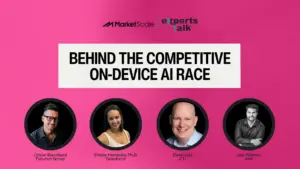Why a Watch or Bracelet Might Save Lives Soon
According to a recent study published by Markets and Markets, the wearable medical device market is predicted to reach $14.1 billion by 2022 from USD 5.31 billion in 2016. Players in this highly competitive industry design and manufacture diverse technology, from blood glucose meters to heart monitors to pain management devices, but they have one thing in common: their field is exploding with innovation.
Changes in the industry did not happen overnight, however. Let’s take a look at how we got here and where we might be going.
The mobile health industry has been defined as “the generation, accumulation, and exchange of medical information through mobile and wireless tools.” As such, the industry’s history is intertwined with that of mobile tech in general, which includes basic tools from calculators to the later use of mobile phones.
It is difficult to pinpoint exactly when “wearable technology” began, considering that the 1600s saw the use of an abacus necklace, but the precursor to today’s devices is more closely associated with the advent of the calculator watch in the 1970s.
Today’s medical devices specifically are linked to the development of mobile computer technology. The crossover into medical use seems to have occurred with the advent of fitness monitoring, in the form of digital bracelets and other wearables that track heart rate and blood pressure, and from there the technology broadened to include glucose meters and other monitors aimed at the self-management of chronic conditions.
After their integration into wellness programs, these devices made their way into clinical settings, where they were used to provide more objective data. Over time, their use has evolved to include therapeutic devices for pain management, respiratory therapy, and insulin control; and diagnostics and monitoring services for vital signs, glucose, sleep habits, and even neurological activity.
The impact of medical wearable technology is potentially huge, for a variety of reasons: the devices are “user-friendly, unobtrusive, and ‘connected’ with features such as wireless data transmission, real-time feedback, and alerting mechanisms,” according to HIT Consultant.
In addition, their advantages extend beyond healthcare itself and empower patients to take ownership of their own health. Furthermore, they offer peace of mind to those who live alone as well as their loved ones, knowing there is an extra layer of security and “communication” available to the ailing family member. It also allows the individual with health concerns to maintain their autonomy.
While there are still issues to be worked out, including billing logistics and data use and related privacy concerns, the wearable medical device is volcanic in its growth and poised to disrupt the medical industry in the next several years. If some of these trouble spots can be smoothed out, there is “infinite opportunity for medical devices to transform healthcare” and “potential for them to become an instrumental part of our daily lives” by reducing healthcare costs, increasing peace of mind, and fostering ownership of our health and wellness.
For the latest news, videos, and podcasts in the Healthcare Industry, be sure to subscribe to our industry publication.
Follow us on social media for the latest updates in B2B!
Twitter – @HealthMKSL
Facebook – facebook.com/marketscale
LinkedIn – linkedin.com/company/marketscale







